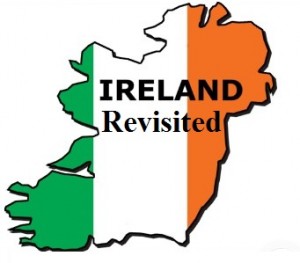Ireland Revisited: Part 23
On the 15th August 1998 the Real IRA parked a car in Omagh town centre containing 500lbs of home-made explosives. Omagh court house was the intended target but the bombers could not find a suitable parking space close enough to the target and instead parked the car some 400 metres away.
 After the car had been parked and the drivers safely away, the Real IRA telephoned three warnings through to the RUC, who later claimed each warning was inaccurate. The RUC, claiming afterwards that they believed the bomb to be located outside the court house, formed a security cordon around the area to keep civilians away, which inadvertently ushered the civilians closer to the actual location of the bomb.
After the car had been parked and the drivers safely away, the Real IRA telephoned three warnings through to the RUC, who later claimed each warning was inaccurate. The RUC, claiming afterwards that they believed the bomb to be located outside the court house, formed a security cordon around the area to keep civilians away, which inadvertently ushered the civilians closer to the actual location of the bomb.
The bomb exploded not long after, killing 29 innocent civilians and injuring 220 others, putting it into the history books as the single biggest attack of the Troubles for fatalities. International media pictures and footage depicted the sheer carnage in the aftermath of the Omagh bomb, showing limbs and body parts lying sporadically across the ground and amongst the rubble, as well as victims covered in blood and dust hurriedly scouring through bricks and wood in search of their missing loved ones.
Probably the most enduring image of the bomb was a photograph released by bomb investigators who found a camera in the rubble. The picture showed a man carrying a child and posing for a picture inches away from the red car carrying the 500lb bomb.
The bomb caused a public outcry not just in the UK and Ireland, but globally. The British and Irish Governments responded by introducing new anti-terror legislation in an attempt to destroy the Real IRA and catch the perpetrators of the bomb.
The Real IRA also came under significant pressure from the Provisional IRA who, in a show of strength, visited the homes of over 60 people they believed to be connected with the Real IRA and ordered them to disband and warned them they will suffer the consequences if the Real IRA interfered with any more Provisional IRA arms dumps.
Under such intense pressure the Real IRA declared a ceasefire on 8th September 1998. The ceasefire however, did not bring an end to the Real IRA. Whilst under ceasefire the group began to regroup into a tighter cell structure to reduce the chance of penetration from the security services. It also began planning its future and in 1999 began re-arming itself with more sophisticated weaponry from abroad and was ready to renew hostilities.
On 20th January 2000 the Real IRA issued a statement to the Irish News condemning the Northern Ireland Executive and the peace process when it stated, “Once again, Óglaigh na hÉireann declares the right of the Irish people to the ownership of Ireland. We call on all volunteers loyal to the Irish Republic to unite to uphold the Republic and establish a permanent national parliament representative of all the people”.
Just over a month later the Real IRA failed in an attempted bombing of Shackleton Army Barracks in Ballykelly. Undeterred by the setback, the Real IRA carried out further attacks on an army base in Dungannon and Ebrington Army Barracks in Derry.
The main ambition for the Real IRA during this period was to destabilize Northern Ireland and destroy the peace process and the Good Friday Agreement of 1998, a settlement they believed cemented the union with Britain as well as legitimizing British rule in Ireland….
Short URL: https://newrytimes.com/?p=198














…I don t understand if the children must be affected by such atrocity…they have no fault about politics..